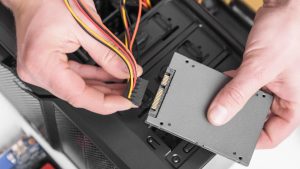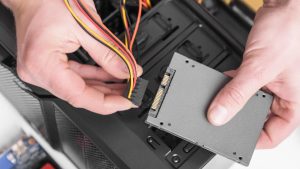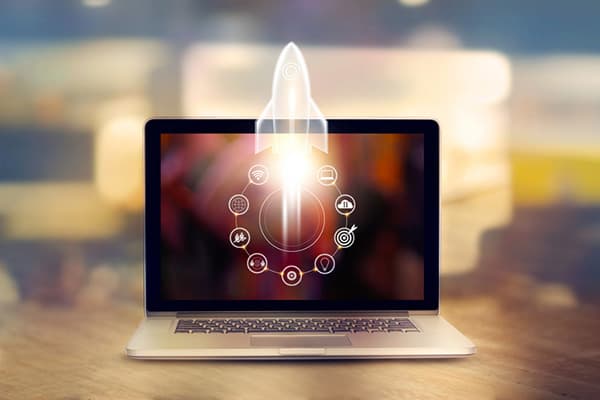Has your PC or laptop been working slowly and not performing as expected? Consider upgrading instead of writing it off and condemning it to the trash can.
A laptop’s performance can be increased and improved, without breaking the bank, by upgrading.
Also Read: How to develop a successful open-source project
How to upgrade your laptop or PC components for improved performance
Here are guides on upgrading your PC or laptop for optimized performance.

First things first;
1. Try a complete reset
You might not even require a new device. Over time, operating systems, mainly Windows, accumulate various digital debris.
It’s also possible that your storage disc needs to be fixed with pointless files. Generally speaking, a drive functions more slowly the more filled it is.
Try a factory reset rather than shell out hundreds of dollars for new gear. All data and settings will be deleted in this process, ideally restoring your laptop to factory settings.
It could take many hours and call for installation media or a live internet connection.
This requires you to make a backup of any crucial files and may also require you to keep track of the product licenses for any software you’ve bought (this is unusual, but some software still functions in this manner).
Avoid making a complete clone of your drive because doing so would bring back your previous issues. Look for a backup system that only saves the needed files, leaving the clutter behind.
Despite all of this, except in rare cases, a factory reset won’t be able to resolve any battery issues.
2. Backup your hard drive
Ensure you have a complete computer backup, or at the very least, all of your key files, before disassembling anything.
If something goes wrong, backing up your old hard drive will let you to recover your operating system and programs more quickly.
You might need to back up files (including music, videos, and images) to another device before replacing your laptop’s internal hard drive with a smaller solid-state drive (SSD).
You can pick which data files and folders to restore after you’ve copied your operating system and programs to the new drive and it’s functioning in the laptop.
3. Upgrade your RAM
There are often only one or two RAM slots accessible in a laptop. It occasionally has a vacant extra RAM slot. If this happens, you should buy new RAM while leaving the old one in place if it is an exact replacement.
Be sure to research online and purchase the appropriate RAM for your model.
The amount of RAM you can install might be limited, and various RAM types require different port configurations.
Also Read: How to design an intuitive user interface
4. Run the RAM
Programs are run on quick solid-state memory called random access memory (RAM). While the computer is powered on, information is only momentarily stored in RAM.
The rising RAM demand is one of the key reasons why older computers have trouble running modern programs.
You may need additional RAM if your computer has trouble running multiple programs or tabs simultaneously in a web browser.
5. Upgrade your storage drive
Typically, swapping out a laptop’s hard drive for an SSD, which is substantially faster, is the most straightforward approach to increase speed overall.
Even if your laptop already has an SSD, upgrading may be advantageous because newer or more expensive SSD solutions might be available.
Performance can be slow if your SSD is almost full.
A larger SSD might offer the benefit of faster speeds—until you fill it up with data—because storage systems operate more quickly the more free space they have.
6. Upgrading the battery
Laptop batteries burn out quickly. Even while the new one will likely be the same brand battery as your old one, replacing it can provide you considerably longer between charges.
However, it will only improve performance if your laptop spends much time in power-saving mode.
7. You can remove the battery
When a laptop’s battery is removable, changing it is typically as simple as releasing the battery lock button or clip, removing the old battery, and replacing it.
This is usually the similarity with older models.
Unfortunately, many modern laptops aren’t built for this; you sometimes have to force or cut open the case, and the user can’t even change some batteries.
They might even be cemented in place or concealed beneath other components. This means you need a new laptop or a professional.
If you want to purchase a new battery, make sure the battery you’re considering buying suits your model exactly because batteries are frequently made to fit into a particular laptop.
Before spending money on a new battery, also see if your laptop’s RAM and storage can be improved (and if it’s beneficial).
If they can’t, think about how long you believe your laptop will last before it needs to be replaced.
Why should I upgrade?
It’s only sometimes necessary to send a slow laptop to the trash can or the recycling facility. Extending the life of what you currently have can be necessary for the environment and your money.


Your old laptop can operate and perform better than the new one with the correct knowledge, resources, and upgrades.
Can you upgrade your laptop?
Most recent laptops include at least some glued or fixed components, making repairs or upgrades difficult without the right tools or experience.
Many laptops use a single piece of metal for the case, or you can only get to the parts by breaking them, making upgrading challenging.
However, there is a way out.
‘Modular’ laptops are a hot topic, with certain manufacturers emphasizing upgradeable technology (‘modular’ is essentially marketing talk for interchangeable components).
Although no one who needs an update right away will benefit from these new laptops, keep them in mind if you decide to purchase a new model.
Read Also: How to optimize your website for voice search
Can you handle it on your own?
You can usually tell if you can upgrade your laptop at home by quickly peeking at the underside. Look for removable panels that permit storage, RAM, or battery access.
Next, look for information online about the make and model of your particular laptop to discover which components are simple to replace.
If you’ve misplaced your original user manual, you may frequently find one online.
Check repair and upgrade videos as well as customer reviews from those who have already completed a project of a similar nature.
Using these will enable you to determine whether any specialized screwdrivers or tools are necessary (Philips, Torx, or Pentalobe screwdrivers may be needed).
You may have to purchase an entire computer repair kit
What laptop components are upgradeable?
You may often upgrade a laptop’s three main components, which are:
- RAM
- Storage
- Battery
Other laptop components, such as the central processing unit (CPU), graphics processing unit (GPU), or a combination, often need to be upgraded.

